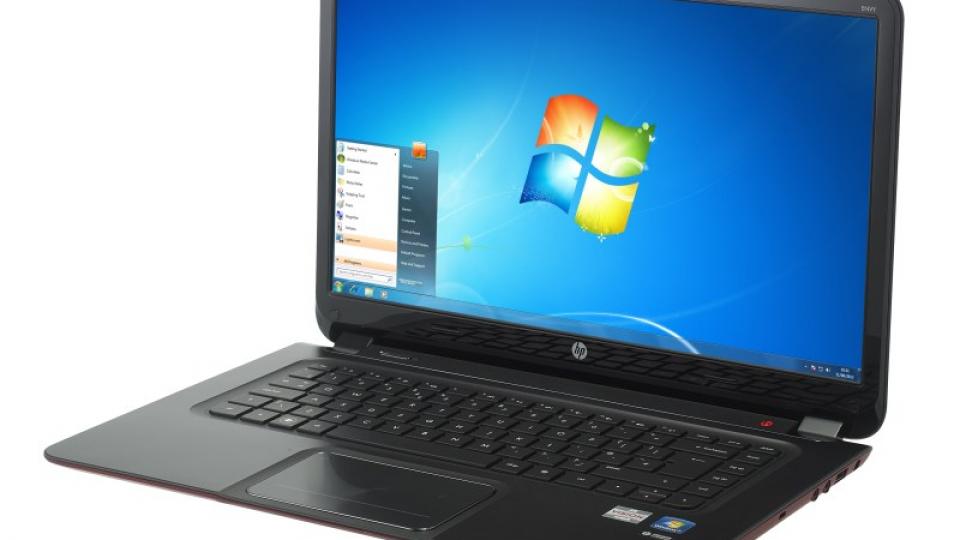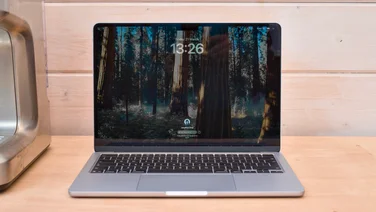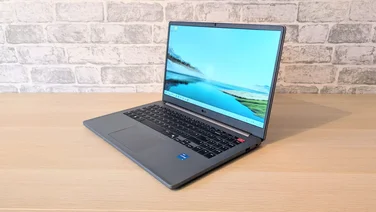To help us provide you with free impartial advice, we may earn a commission if you buy through links on our site. Learn more





We were impressed by AMD’s latest “Trinity” mobile processors when we got our hands on a prototype laptop earlier this year, but we’ve had to wait a while for the first Trinity-equipped production model. It’s finally here in the shape of the Ultrabook-bothering HP Envy 6.
There’s also an Intel-powered HP Envy 6 on sale, which has an identical chassis and screen. The Intel model is called an Ultrabook, while HP has called the AMD laptop a Sleekbook instead.

While the prototype laptop had a top-of-the-range A10 processor, the Envy 6 Sleekbook is powered by a mid-range A6-4455M processor running at 2.1GHz. The dual-core processor can use Turbo Core to reach 2.6GHz where there’s enough thermal headroom. The chip found our multimedia benchmarks a challenge; it could only muster an overall score of 21, which is less than half that of the Intel-powered Envy 6. While demanding tasks such as video encoding were a challenge, the laptop copes fine with normal tasks such as office work and web browsing with multiple tabs open.
All Ultrabooks have some kind of solid state storage, whether as a main disk or as a cache, as this is part of Intel’s Ultrabook specification. The Sleekbook only has a normal 500GB hard disk, so won’t boot as quickly or have an SSD-equipped PC’s general feeling of snappiness. Thankfully, the Trinity chip excels in other areas. In our light-use battery test, the Envy 6 managed a fantastic 8 hours 45 minutes away from the mains, meaning you’ll be able to last an entire working day on a single charge if you stick to light tasks such as word processing.

AMD is keen to point out how its processors have superior gaming performance to the Intel competition, and Trinity’s saving grace is its gaming performance. AMD’s integrated Radeon HD 7500G GPU shares 512MB of RAM with Windows, and can cope with modern games. Although it could only manage 21.4fps in Dirt3 at 1,280×720 with High detail and 4x anti-aliasing, with Low detail and 4x anti-aliasing we saw a playable 29fps. This compares favourably with the 16.1fps and 25.3fps from the Intel Envy 6 at the same settings. Other games were playable, too. Call of Duty: Modern Warfare 2 was smooth, and even the brand-new Street Fighter X Tekken was playable at high detail levels, with a silky-smooth 60fps – compared to 48fps for the Intel Envy 6. Street Fighter X Tekken’s own rating system rates the AMD Envy 6 as an “A” and the Intel system as a “B” for performance.
On the outside, the AMD Envy 6 is the same as the Intel model. Both have two USB3 ports, a single USB2, HDMI, Ethernet, 3.5mm headphone and microphone audio jacks and a multi-format card reader. Both have black brushed metal lids and a red underside finished in a soft-touch rubberised plastic.

The black and red colour scheme continues underneath the lid, with a matte black keyboard tray and metal-effect touchpad. We wouldn’t expect a backlit keyboard at this price, so its omission is unsurprising, but the keyboard is otherwise great for everyday use. It has full-size, Chiclet-style keys which are sensibly spaced and have a comfortable amount of travel. There’s a little bit of flex in the tray, but it’s only noticeable when you apply significant force. The Function keys are mapped to various multimedia functions, but you can change them back to normal Function keys in the BIOS.

HP doesn’t have the best track record when it comes to all-in-one touchpad designs, but the Envy 6’s model is accurate and responsive, recognising multi-touch gestures quickly and with enough sensitivity to span the entire desktop in a single swipe. We also appreciated the way a double-tap to the top left corner disables the touchpad completely, in case it gets in the way when using a mouse or playing games. Some people didn’t get on with the fact that pressing the touchpad buttons can move the cursor, but it’s not a problem if you mainly tap rather than click to select objects.
HP’s Beats Audio partnership may be mainly about branding, but it does mean you can expect a slightly better audio experience with the Envy 6 than you might with another laptop. The laptop’s third speaker specifically for low frequencies gives bass more presence, helping create more balanced audio without an overly sharp high end or noticeable distortion. It’s still no threat to a dedicated set of speakers or pair of headphones, but the built-in speakers are good enough for casual music listening.

For the most part, the Envy 6 hits all the right notes, but it stumbles when it comes to image quality. The 1,366×768 panel is distinctly average, especially as the glossy finish makes light reflections a problem. There’s a decent amount of screen tilt, but viewing angles are exceptionally shallow, creating colour shift from anything beyond a face-on view. The screen is also not very bright, even on the maximum setting, making it difficult to pick out the details in some of our darker test images. The screen’s one saving grace is how vibrant colours look – the glossy finish gives them plenty of pop, which makes images really stand out.
The first laptop we’ve seen with AMD’s Trinity processor is something of a mixed bag. The dual-core A6 processor used in the Envy 6 was never going to power through our benchmarks, but its fantastic battery life and impressive gaming performance meant it excelled in other areas. The laptop itself is well built and, our issues with the screen aside, exceptionally good value – there are very few budget alternatives that are this well made and stylish. The Envy 6 Sleekbook will struggle with editing high-definition video, but if you’re looking for your next general-purpose laptop, this should be a serious contender.






